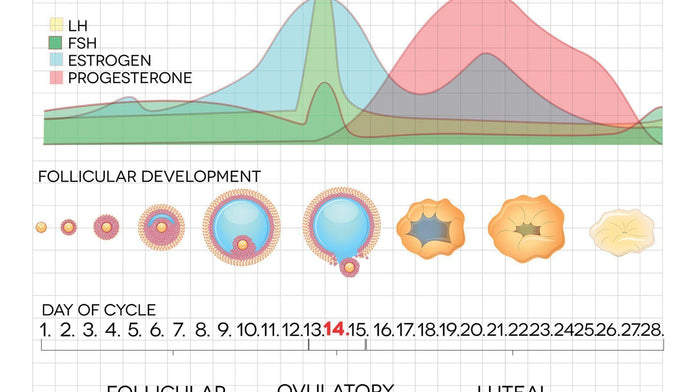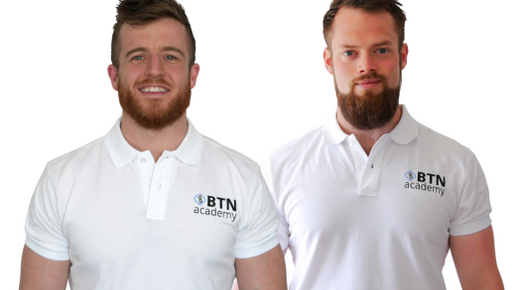
How to optimise diet and training around the female cycle
Posted on | Last updated 02-02-2017Sorry fellas, this one's for the ladies but it won't do you any harm to read....
As females it’s not just as simple as having a training programme and sticking to it week in week out. Unfortunately for us ladies (we're talking about premenopausal ovulating women here) we also have to deal with our fluctuating hormones at different times of the month. This will affect some females more than others but as long as we are aware of what is happening within our monthly cycle then it’s possible to manipulate our training and nutritional content accordingly for maximal benefits.
The cycle
So let’s start off by briefly going through the cycles phases and what happens to our hormones.
Days 1-14 is the FOLLICULAR PHASE; so called because the follicle which is holding the egg is developing here. So day 1 is the start of menstruation. Oestrogen levels start off low on day 1 and then increase slowly towards day 14 while progesterone levels are low.
Then from around day 14 OVULATION occurs where the follicle ruptures and the egg is released. Oestrogen levels peak here and progesterone levels start to increase.
Days 15-28 are the LUTEAL PHASE- where the follicle turns into the hormone secreting structure the corpus luteum which secretes progesterone making this the dominant hormone at this time. this is also the time when your baseline body temperature increases so if you have ever wondered why some nights you are particularly warm this is why! If the egg is not fertilized, then the corpus luteum dissipates causing both oestrogen and progesterone levels to fall and menstruation begins the next cycle.
Training and menstruation
But, what does this mean for our training?
Well in the first half of the cycle when we are oestrogen dominant, this means that we are also more insulin sensitive, thus more likely to be able to gain more muscle and store less fat at this time. We also have a higher pain threshold during this period so it’s a great time to concentrate on heavy strength and hypertrophy weight training. If you are eating sufficient carbohydrates your body will utilise them efficiently during this phase so you can usually get away with having a slightly higher carbohydrate intake as your energy and strength levels will be at their peak.
As we move into the luteal phase in the second half of our cycle, increasing levels of progesterone make our body more insulin resistant and unfortunately means that it also wants to hold onto fat stores a little more at this time. If fat loss is your goal, then this the time to be careful of the amount of carbohydrates you are eating and you can consider lowering these slightly while compensating that with a higher level of healthy fats in your diet to keep your energy balance right.
If during this time, you are feeling that you just can't push the big weights in the gym then back off a little, lower your weights slightly and concentrate on a higher rep range or fat burning workouts such as supersets or sets with 30-45seconds rest in between to keep your heart rate up whilst focusing on muscle contraction. As our pain tolerance levels are also lower, this is a good time to do your steady state cardio, so get outside for some fresh air and a nice long walk, remembering that by doing this you are also burning calories but without adding further stress to your body.
Recovery methods such as meditation, self-compassion, foam rolling, sports massage or stretching and warm baths are good to utilise too. Basically, be nice to yourself.
While these cycle stages might not be much of an issue for some females, others can have horrendous symptoms which often can be helped to a certain extent by consistent whole food choices with healthy fats and optimum levels of protein within our diets as well as all important fibrous fruit and vegetables.
When our daily intake is lower in refined sugar, trans fats and we are well hydrated our body functions better not only physically but also mentally which is always an important factor in our training.
Mental focus people!
Basically, be nice to yourself.
Diet manipulation
In the week prior to menstruation if you get symptoms such as breast tenderness, water retention and bloating, clumsiness, forgetfulness what is important is not to judge yourself too much at this time and remember that will be fine again in 7-10 days’ time.
With regards to manipulating our diet- here's an example below of how you might like to do this:
| Days 1-14 | Days 15-28 |
|---|---|
| Overall daily intake 1810kcal | Overall daily intake 1810kcal |
| Carbohydrates- 200g | Carbohydrates-155g |
| Fats- 50g | Fats- 70g |
IMAGE
A lot of women get hungrier in the run up to menstruation. If this is you try to keep a constant level of energy in your system by spacing your meals out evenly during the day and having a mix of all 3 macros in those meals. The healthy fats should help with satiety but if you are finding you are still ravenous then try upping your carb levels by a small amount of around 10-15g.
Another tip to help those cravings is to mix a tablespoon of high quality cocoa powder (I like Green & Blacks) with water and drink this. You can also mix it with unflavoured BCAA powder to help raise serotonin and dopamine levels which drop around the week before your period.

Most importantly – DON’T STRESS about it! This happens every month so it’s about being able to manipulate it to work FOR you not AGAINST you.
Nutrition and exercise often appear straight forward but as things like this show you, this is far from the case. Sure there are some things that go for everyone – calorie deficits cause fat loss and leucine is important for muscle growth, but as BTN teach on The Practical Academy there are some considerations such as this which need to be taken into account, too. The BTN Practical Academy goes into far more depth on female nutrition and training, as well as looking into nutrition for those with PCOS, diabetes and IBS. Taking these things into account makes for a far more successful dietary approach, and I can’t recommend the course enough for any coaches out there who have ever thought about helping clients who, arguably, are more in need of help.
You can buy individual modules that you want to study with the BTN Bitesize Academy.
References
- D’eon et al. “The Roles of Oestrogen and Progesterone in Regulating Carbohydrate and Fat Utilization at Rest and during Exercise”. Journal women’s health and gender based medicine 2002;11(3):225-237
- Reed et al. “Energy availability discriminates clinical menstrual status in exercising women” http://www.jissn.com/content/12/1/11
Our Nutrition Podcast

Join Tom and Ben from BTN on Ben Coomber Radio to learn all about nutrition, performance, health, and the latest science. A mix of guest and co-hosted shows. You'll learn a ton.
Listen now